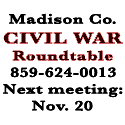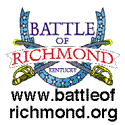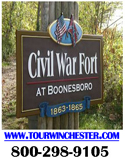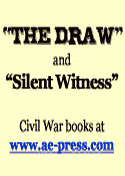|
Yes, Virginia, there was a Civil War air force
The Civil War air force really began in April 1861.
That’s when New Hampshire native Thaddeus S.C. Lowe left Cincinnati in his balloon Enterprise for a flight across Virginia.
During his ascent, the Civil War began at Fort Sumter and when unexpected high winds forced Lowe down in South Carolina, the aeronaut was captured and imprisoned as a Union spy.
Although he convinced his captors that his balloon trip of some 620 miles was strictly for scientific purposes, Lowe soon was to be in the employ of the U.S. government.
A financial supporter suggested to U.S. Treasury Secretary Salmon P. Chase that a balloon corps be established under Lowe’s command to provide aerial reconnaissance for the Union armies.
By that summer, President Abraham Lincoln established the Balloon Corps, a civilian organization under the authority of the Union’s Bureau of Topographical Engineers. And, Lowe was given permission to requisition equipment and personnel.
The Union, the first U.S. balloon designated for military use, was completed Aug. 28, 1861.
On Sept. 24, Lowe ascended to more than 1,000 feet near Arlington, Va., and began telegraphing intelligence on Confederate troops at Falls Church, more than three miles away. Union artillery was aimed and fired successfully without actually seeing Confederate troops, a first in the history of warfare.
Lowe was given permission to build four more balloons and a fleet soon consisted of the Intrepid, Constitution, United States, Washington, Eagle, Excelsior and the original Union.
The balloons ranged in size from 15,000 to 32,000 cubic feet and had enough cable to climb 5,000 feet.
Lowe succeeded in developing equipment for the production of hydrogen, which was suitable for transportation and provided mobility for the balloons. Hydrogen was made by dropping iron filings into containers of sulfuric acid then piped to the balloon to be inflated. Several days were required to complete the task.
Lowe, part showman and part serious balloonist, had several rivals in the balloon warfare race.
John LaMountain, Samuel King and the brothers James and Ezra Allen were serious competitors, but Lowe had the ear of the president.
LaMountain, a colleague of early 19th century balloonist John Wise, did make some significant contributions to air warfare.
On one occasion, in July 1861, he tethered his balloon to the deck of the armed transport Fanny and made a number of observation flights. As such, Fanny became the world’s first aircraft carrier.
Federal balloons restricted the mobility of Confederate troops, who tried to destroy them, but without much success.
The Confederacy retaliated in the spring of 1862 when Capt. John Randolph Bryan oversaw the construction and deployment of an observation balloon. It consisted of a cotton envelope coated with varnish and filled with hot air, as the Confederacy did not have the capability for generating hydrogen in the field.
Bryan’s vessel was launched April 13, 1862 over Yorktown, Va., and enabled the captain to sketch a map of Union positions.
A second Southern balloon was constructed of multi-colored silk, which led to the legend that it was made from silk dresses donated by Confederate ladies.
Another “Silk Dress Balloon”, this one gas-filled,went into service at Richmond in the fall of 1862. It provided aerial observations until the summer of 1863 when swept away by high winds and captured by the Union.
Balloon corps did not last through the war, however.
Union funding was cut in 1863, Lowe was accused of financial impropriety and he resigned from the Corps in May 1863. By August, the corps had disbanded. The Confederacy also called it quits that same year.
|
|
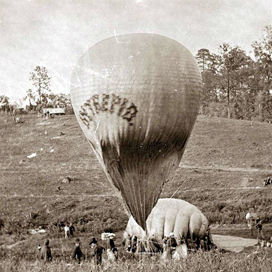 |
|
|






